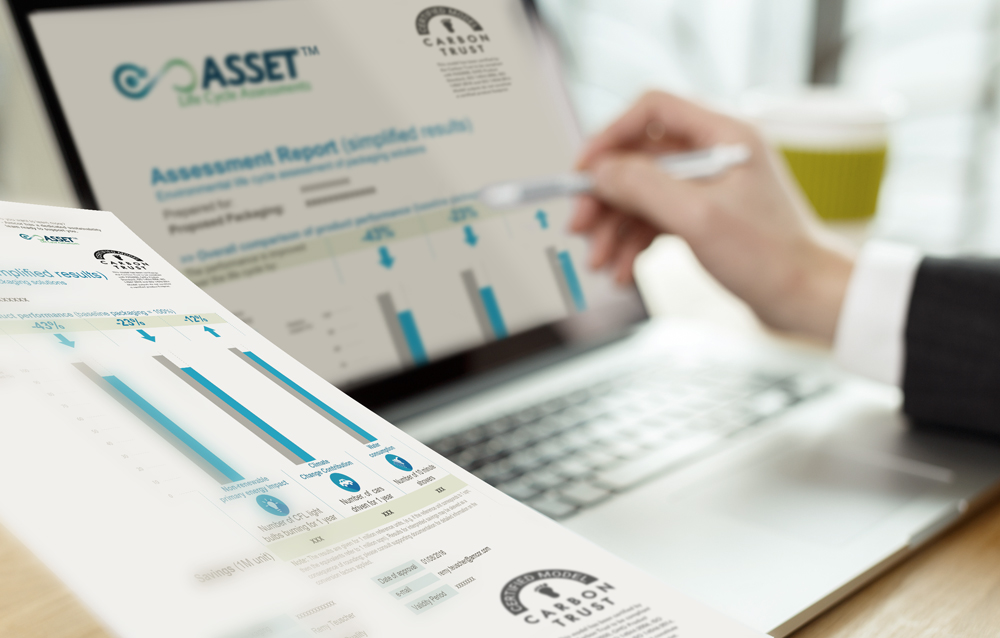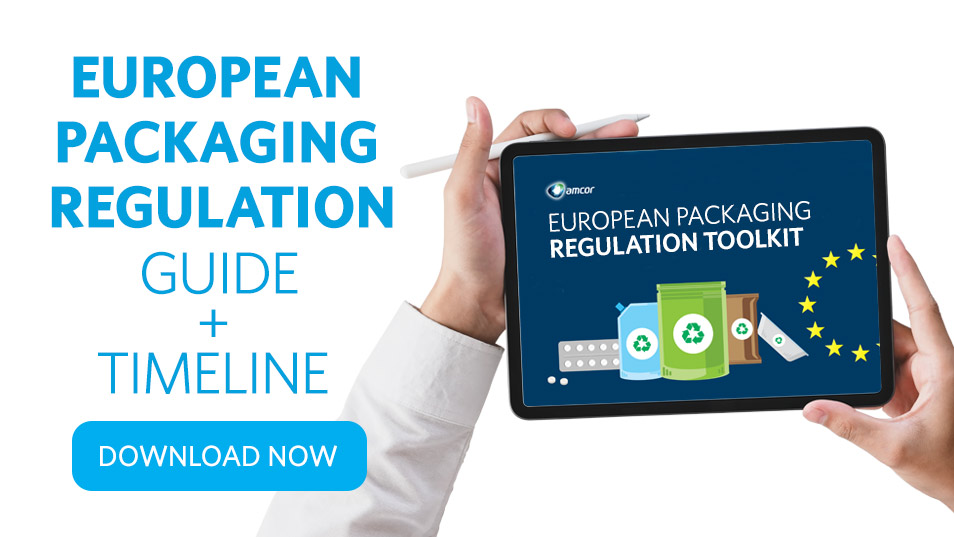Benefits of a life cycle approach to packaging
Sustainability
March 24, 2023Reading time: 3 minutes
Find out how you can use a life cycle assessment tool like ASSET ™ to meet sustainability expectations and improve your packaging’s carbon footprint.
Find out how you can use a life cycle assessment tool like ASSET ™ to meet sustainability expectations and improve your packaging’s carbon footprint.

ORIGINALLY PUBLISHED IN JULY 2019
As sustainability legislation tightens and more consumers demand products that are better for the planet, brands are seeking packaging solutions that can minimize their environmental impact. But while some materials have clear benefits, they may not be the right choice when you consider the product’s full life cycle.
This is why a life cycle assessment (LCA) tool such as Amcor’s Advanced Sustainability Stewardship Evaluation Tool – or ASSET™ – is so useful. It cuts through the noise and gives brands data-based facts about the environmental impact of different packaging solutions.
Let's explore the key benefits:
1. LCA assesses the environmental impact of packaging at every stage
To understand the impact of your packaging, and what you can do to improve, it’s necessary to assess every stage of the packaging life cycle.
This starts with the source of the raw materials and how they are harvested or produced. It should then consider the energy used to transform them into the final packaging material, the water consumption and CO2 emissions used in production, transportation, and the packaging’s end-of-use (i.e. recycling, landfill, incineration, etc).
From source to shelf, an LCA identifies points for improving the environmental performance throughout the chain and then makes recommendations such as smarter use of materials, simplifying production processes, and even helping a brand to improve disposal opportunities.
2. LCA helps you avoid unintended consequences
An LCA identifies the best “fit for purpose” solution. Simply switching to packaging based on its perceived sustainability credentials may seem like an obvious choice, but sometimes it’s not the solution when all is considered.
Inappropriate packaging materials can have practical or environmental drawbacks such as increased food waste, loss of product protection, or increased carbon footprint. This is why careful assessment of the right solution is needed on a case-by-case basis to find the most effective packaging solution, free from unintended environmental consequences.
What is life cycle assessment?
Watch Video
3. LCA makes it easy to prove sustainability credentials to consumers
ASSET™ is fact-based and audited by a third party, The Carbon Trust. It provides proven measurements and evidence of the sustainability benefits of the different packaging options a brand is considering. Our experts can then support converting this data into consumer-friendly messaging about a brand’s commitment to sustainability, while helping a brand to future-fit products ready for regulatory changes.
Certified by The Carbon Trust, ASSET™ is also grounded in internationally recognized standards and best practices in environmental life cycle assessment. Once a brand has launched a new pack with a carbon footprint reduction of at least 20%, we can facilitate getting a Carbon Trust-certified claim printed on-pack, clearly demonstrating a brand’s sustainability actions to end consumers.
HOW SUSTAINABILITY CLAIMS ARE IMPACTING CONSUMER PERCEPTIONS: 2ND EDITION
Our 2023 consumer research uncovers a powerful relationship between packaging recyclability and consumer purchasing behavior, alongside rising consumer concern about global warming. Download our report to understand how third-party-certified claims, such as those for carbon footprint reduction, can have the biggest influence over consumer purchase decisions.
Why is now the time for brands to use LCA?
Brands pivoting towards ambitious sustainability targets need to move at pace. This is why ASSET™ takes a comprehensive end-to-end approach to find the right solution for our customers. This makes the process painless and minimizes costs.
With all the facts needed to support a brand’s decisions, prove its environmental actions, and explain them in a compelling way for consumers, an LCA enables you to connect with new, innovative products to suit your sustainability goals while preparing you for upcoming regulation changes.
We want to make this as easy as possible, which is why we’re excited to be launching AmPrima® in Europe, a new portfolio of recycle-ready packaging solutions suited to a range of applications, that maintains production efficiency and product protection - you can read more about the launch here.
Ultimately, LCA tools like ASSET™ are driven by the need to create a more circular economy and protect the future of our planet. The path to deliver our sustainability pledge is to develop all our packaging to be recyclable or reusable by 2025 is built on helping our customers transform today, for a more sustainable tomorrow.
To find out more about life cycle assessments, connect with an Amcor expert today to discuss how ASSET™ can revolutionize the environmental impacts of your packaging.
You can also try our ASSET Demo tool to see how ASSET™ could be applied to your packaging decisions.
Would you like to stay up to date on the latest industry trends? Sign up to receive regular expert guidance, insights and webinar invitations on topics such as sustainability and upcoming regulations.
So, with this outline of life cycle assessment and its key benefits for packaging, hopefully you feel ready to dive further into sustainability topics. For example, how about downloading our 2023 research report on why sustainability matters to consumers, and learn which sustainability claims resonate the most. And if upcoming EU regulatory changes are top of mind for your brand, download our 5-page guide and infographic timeline to learn the latest information on PPWR, EPR and plastic tax.
Related Insights
Chemical recycling for flexible plastic packaging in Europe
February 15, 2023
What is chemical (or advanced) recycling? And what opportunities does this emerging process present for flexible packaging? We'll take a focused look at Europe.
What is chemical (or advanced) recycling? And what opportunities does this emerging process present for flexible packaging? We'll take a focused look at Europe.
Infographic: ASSET™ Life Cycle Assessment of AmPrima® PE Plus Recycle Ready Solutions
January 21, 2021
Understand the environmental impact of your packaging
Understand the environmental impact of your packaging
Innovating to solve the impossible: world-first recyclable retort flexible packaging
January 26, 2021
Retort pouches, used for food products like ready-meals, soups, pre-cooked rice, baby foods and wet pet food, are one of the most difficult packaging solutions to make recyclable.
In fact, when we embarked on our pledge to make all our packaging recyclable or reusable by 2025, we were told by many that a recyclable retort pouch wouldn’t be possible.
Retort pouches, used for food products like ready-meals, soups, pre-cooked rice, baby foods and wet pet food, are one of the most difficult packaging solutions to make recyclable.
In fact, when we embarked on our pledge to make all our packaging recyclable or reusable by 2025, we were told by many that a recyclable retort pouch wouldn’t be possible.
More sustainable packaging: 5 common questions
December 5, 2024
Bust common sustainability myths, with the five most common questions our packaging sustainability experts hear. Gerald Rebitzer, Sustainability Director, shares his answers.
Bust common sustainability myths, with the five most common questions our packaging sustainability experts hear. Gerald Rebitzer, Sustainability Director, shares his answers.


